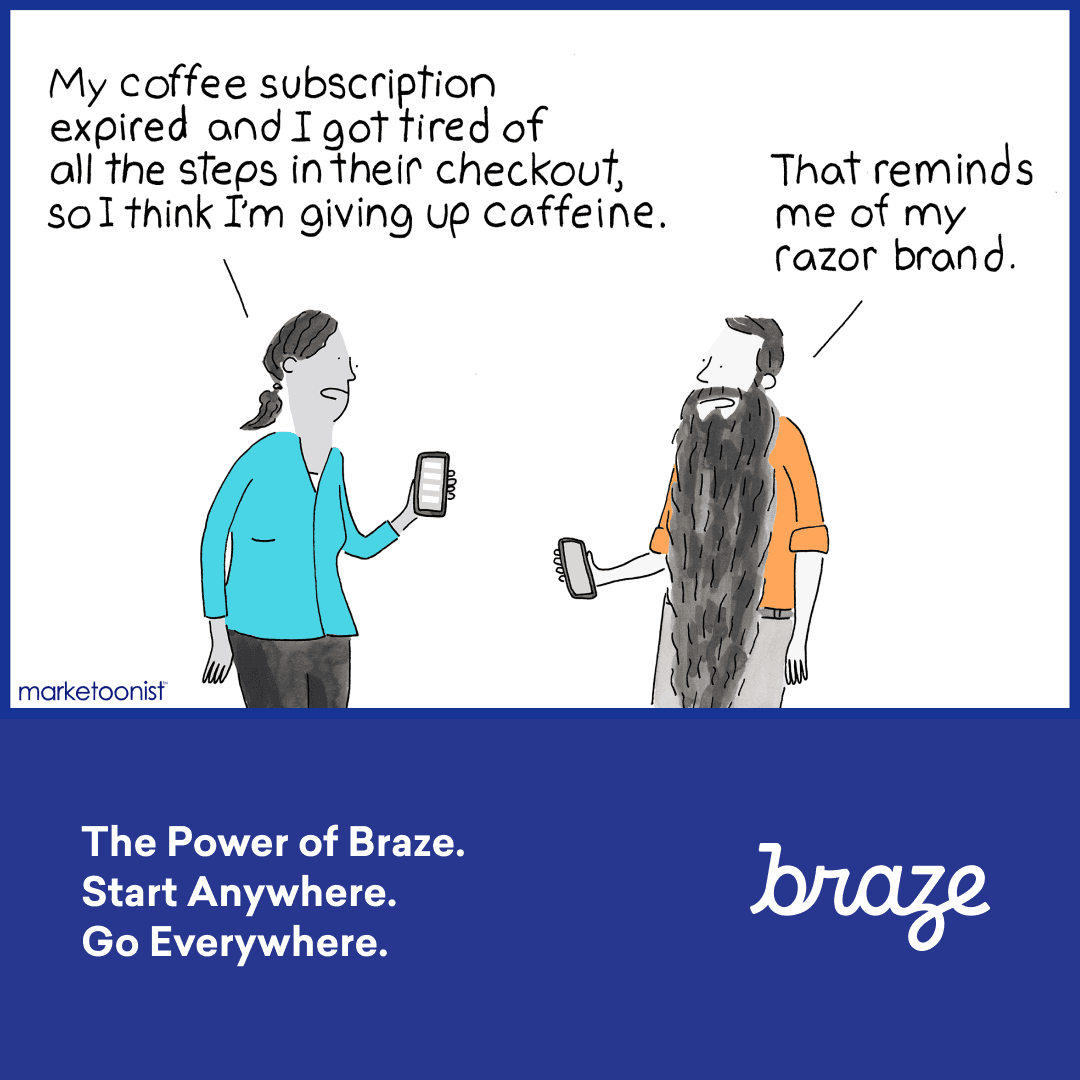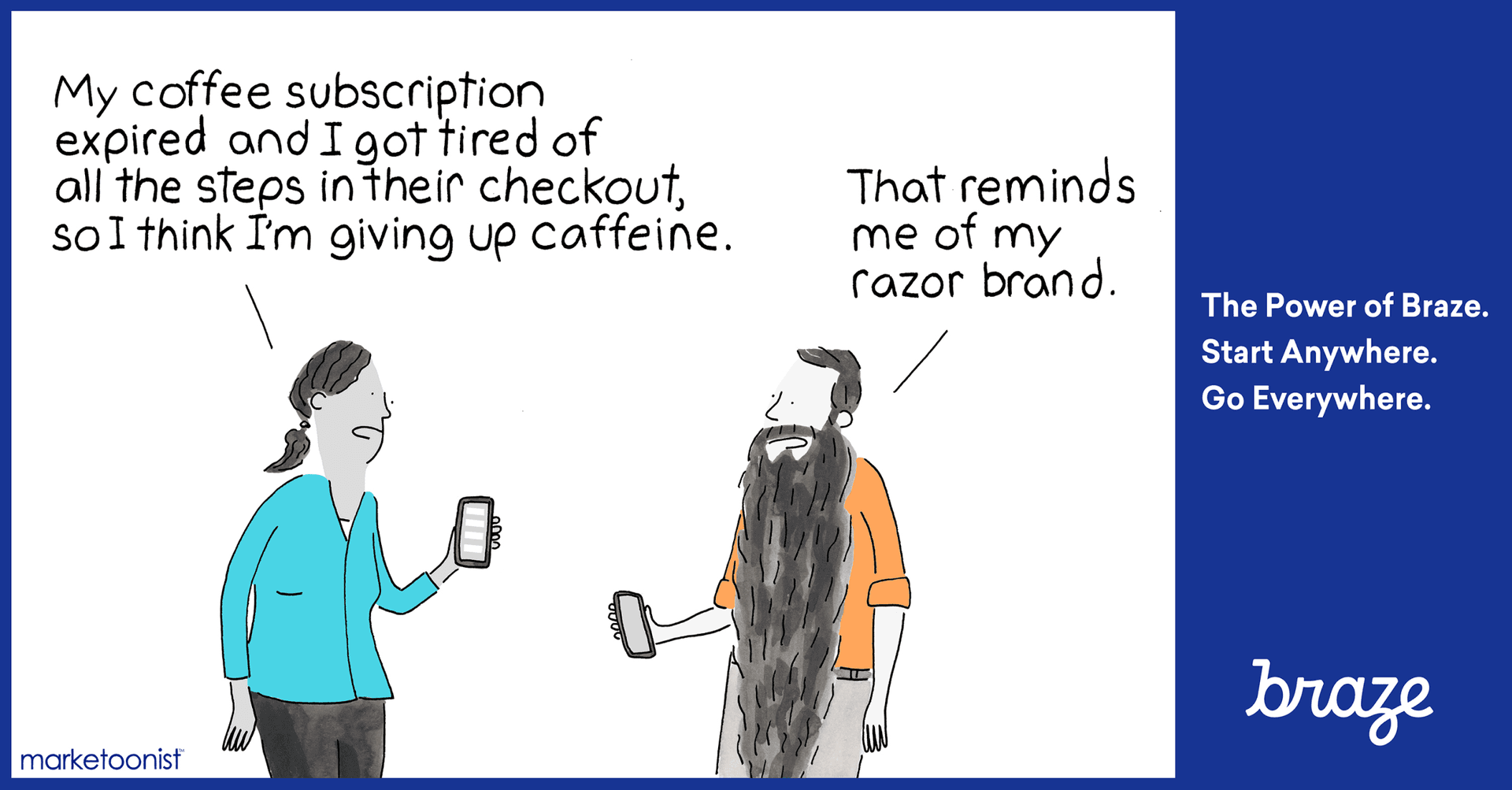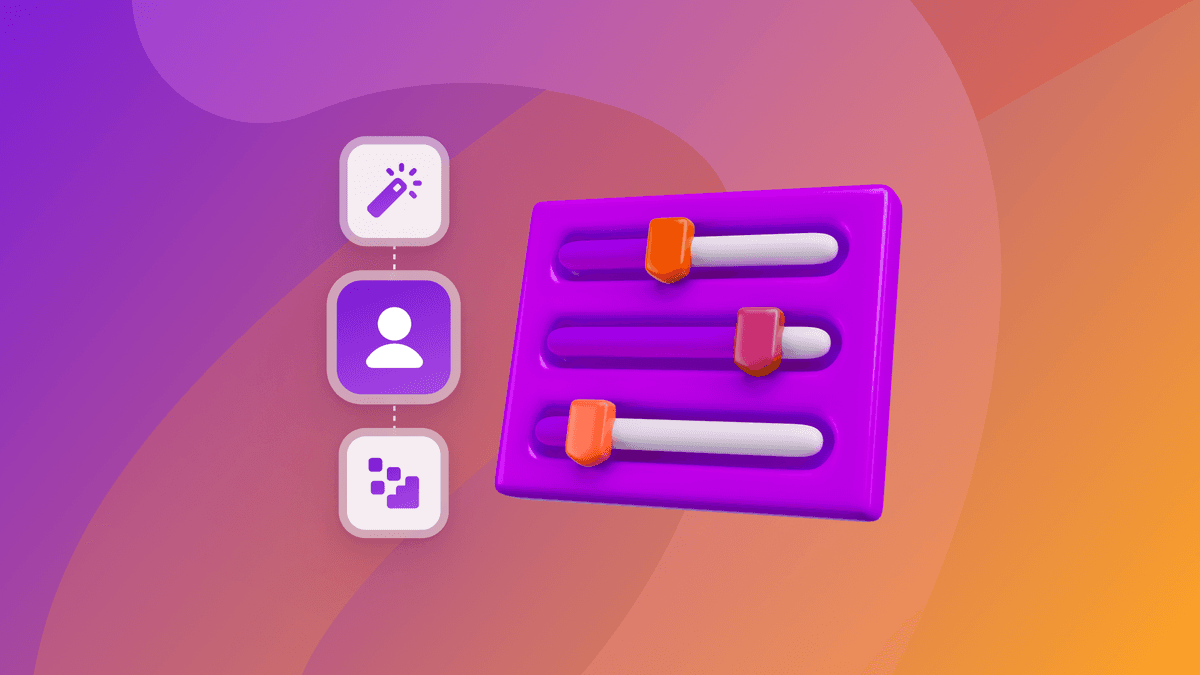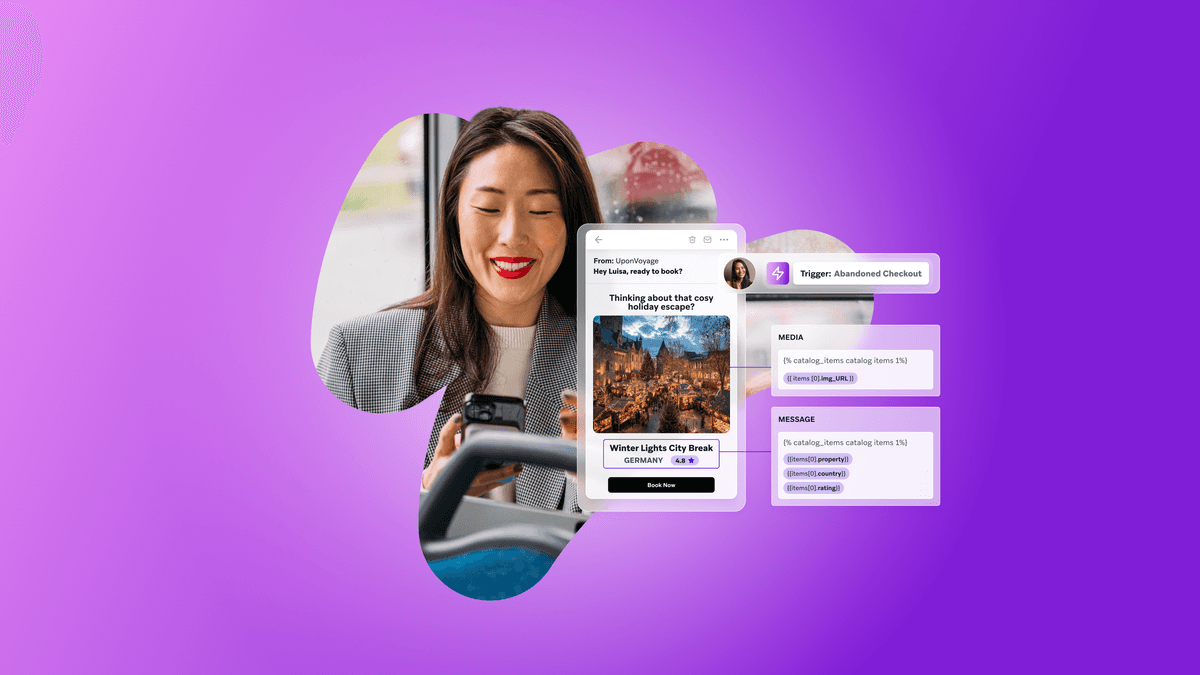3 Things CPG Brands Can Do To Retain Valuable Customers
Published on July 28, 2021/Last edited on July 28, 2021/4 min read


Laura Naparstek
Product Marketing Manager, BrazeConsumer packaged goods (CPG) brands have heeded the call to build direct-to-consumer (DTC) offerings after more than a decade of ecommerce sales growth and a 25.7% increase in growth worldwide in 2020 alone. They’ve invested in virtual try-on experiences, in product customization, and they’ve launched subscriptions models for customers to auto-replenish the products they love.
Subscriptions, virtual experiences, and customization all sound great. But simply building a better ecommerce offering to attract customers does not magically keep them engaged over the long haul. Consider subscriptions: Beyond the investment brands make to support subscriptions, there are even higher costs associated with failing to implement a strategy to retain subscribers. When 40% of consumers end up canceling a subscription because they don’t get the nuanced and context-driven experience they expect from you, the cost is not that they will walk around uncaffeinated or unshaven. Rather, these customers will buy coffee and razors from someone else—and you’ll have to pay extra to re-acquire them.
Customer engagement is a key growth lever for brands’ ecommerce offerings because it evokes a higher order objective that brands set out to achieve, rather than just using a single messaging channel (e.g., email marketing) or just the mechanisms involved (e.g., marketing automation). Marketing teams at CPGs should feel empowered to join the ranks of sophisticated brands that use customer engagement to identify and retain valuable customers. Here’s how.

1. Activate the first-party data at your fingertips. Brands can and should have a first-party relationship with customers rather than ceding control of vital brand messaging to a platform giant or programmatic algorithm. The key is using first-party data—any brand with digital touchpoints already has it. Brands use first-party data, like all the digital behaviors customers exhibit on your website, to send well-timed, personalized replenishment reminders. Or they use it to identify high-value customers and attract similar ones on paid media networks, increasing ad effectiveness and eliminating wasted spend. And they use it to test the best time, content, frequency, channels, and audience for every brand interaction.
2. Inventory all the ways you already deliver value and build a customer engagement strategy around them. CPGs have spent years assembling world-class brand marketing teams that excel in defining all the ways their brands deliver value to consumers. Marketing teams should do more to put these powerful brand levers to work. Every value touchpoint—from an in-store activation promoting a new sustainable dog food, to an exclusive partnership with a retail partner, to a cool new way to try a beauty product—should slot into a customer engagement strategy that ensures individual consumers are experiencing all that value directly.
3. Emulate other DTC brands’ cross-channel lifecycle messaging strategies. Many well-known DTC disruptors use growth marketing (or lifecycle marketing) playbooks to build their customer bases. CPGs should do this, too. A proper lifecycle approach ensures you’re covering every stage of the customer journey, from acquisition and activation to conversion and retention. Lifecycle messaging strategies work best when they enlist a cross-channel approach: Our research found that messaging customers on two channels instead of one results in a 76% longer user lifetime and a 58% increase in 30-Day retention. Adopting a lifecycle strategy is a forcing function for moving away from one-off promotional campaigns and developing use cases that actually move customers from one customer journey stage to the next.
Final Thoughts
Brands with DTC strategies have made significant investments in their ecommerce offerings, including subscriptions. Customer engagement is the best way to ensure customers keep using all those new capabilities. The upside is enormous—and the risk of hesitating grows bigger every day as competitors move ahead.
Related Tags
Be Absolutely Engaging.™
Sign up for regular updates from Braze.
Related Content
View the Blog
How behavioral marketing turns data into personalized experiences

Team Braze

How Braze supports exceptional customer engagement during Black Friday, Cyber Monday, and beyond

Todd Grennan

How to overcome messaging fatigue this holiday season
